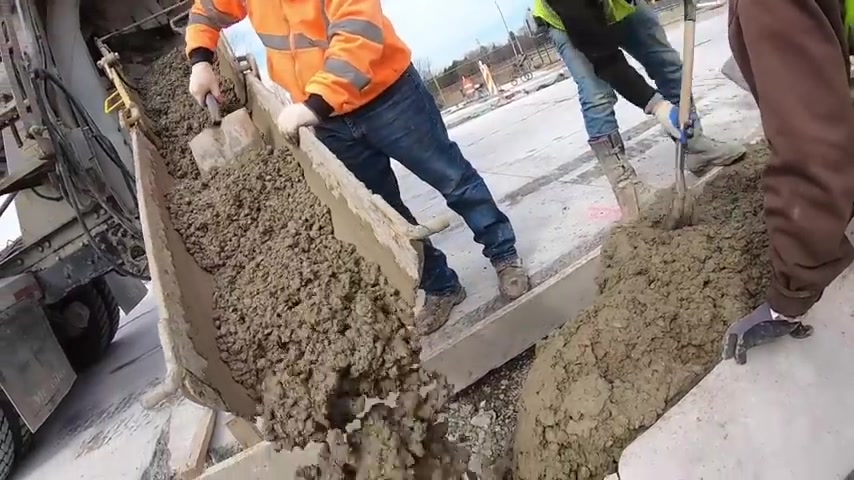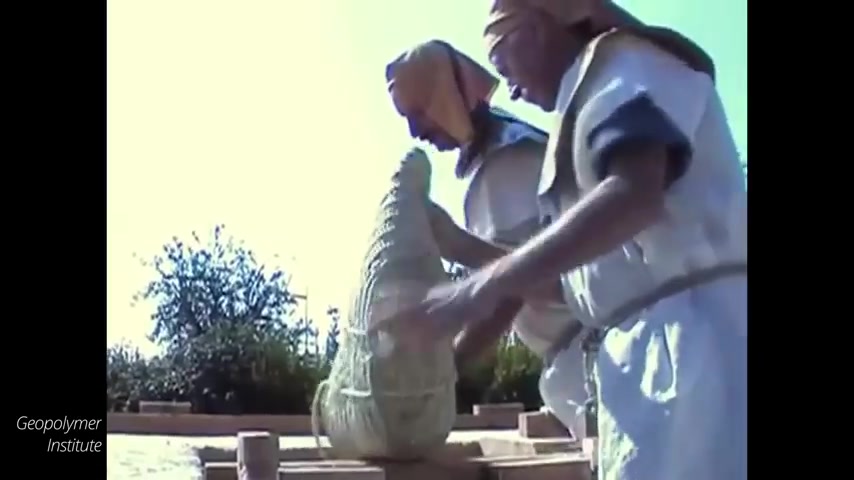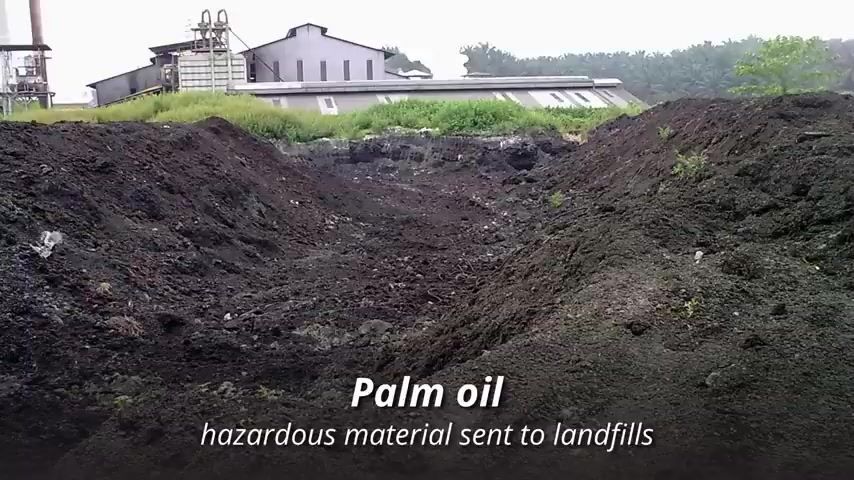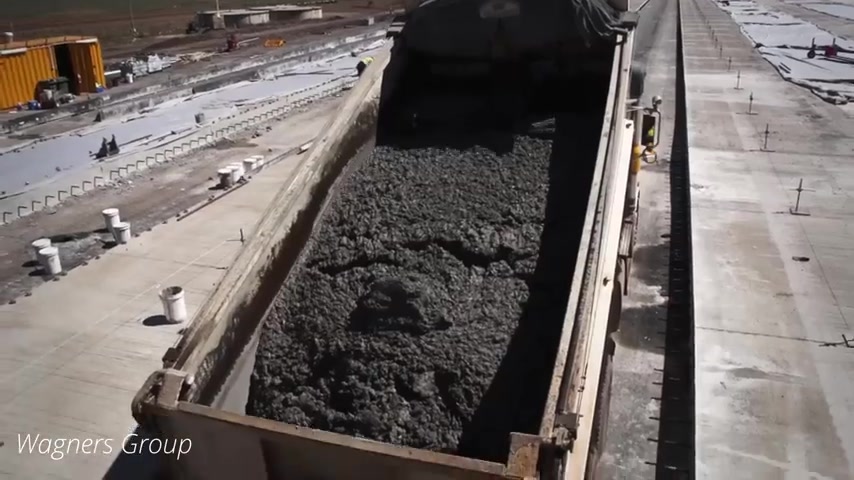
https://youtu.be/_b5dgyB6K6w?si=mmFRmmXetv-Z5gTU
Are Geopolymers BETTER than Portland Cement

Concrete is one of the most widely used substances on earth .
It has allowed us to tame nature and is the foundation of modern development .
However , it is causing our blue and green world to become grayer .
By the second in 2020 scientists estimated that human main materials reached 1.1 trillion tons exceeding the mass of all living things on the planet , including people , bacteria , plants and animals combined .
One of these human made culprits is Portland cement .
The key ingredient in concrete that binds all the other ingredients together .
Its production is very energy intensive .
It emits carbon dioxide and other greenhouse gasses .
It causes soil erosion and noise pollution and it adversely affects air quality .
Researchers around the world are trying to find an alternative to traditional cement and concrete that is less destructive to our planet .
One very promising material is geo polymer cement .

It completely replaces Portland cement with waste industrial products .
It can also be much stronger and perform better than traditional cement .
In this video , we're going to discover how GEO polymers are made , how they are used , their advantages and disadvantages .
The term GEO polymer was coined by Joseph Davidowitz in 1978 he came up with a pretty controversial theory on how the ancient pyramids were built .
He didn't believe that they were made of huge blocks of stone hauled up one at a time .
Instead , he suggested that the blocks were formed by pouring crushed limestone , clay , lime and water into molds .
This mixture hardened into a fake synthetic stone that he called GEO polymer .
Using the same theory , scientists have created a new type of concrete that is 100% free of cement .
They use a variety of waste materials , industrial by products and minimally processed natural materials .

Instead of Portland cement , these waste products are difficult to decompose and they can affect the environment if left untreated .
So using them to significantly reduce the carbon footprint of concrete is an excellent idea .
Let's look at some of these waste or low energy materials fly ash or pulverized fuel ash , which is a fine powdery residue from coal burning power plants .
It is mainly composed of silicon dioxide , aluminum oxide and calcium oxide meta Kline which is produced when China clay or Kline is heated to 1500 °F or 800 °C .
It can be used to make tiles and traditional concrete ground granulated blast furnace slag which is a by product of the steel industry .
It is high in calcium silicate hydrates which improves the strength durability and appearance of concrete .
Palm oil fuel ash , which is produced by burning palm oil shells and husks .


It is a hazardous material that is usually sent to landfills , but it can be used to make cement .
Every one of these raw materials performs differently and produces a different type of geo polymer cement .
But I'm going to simplify the overall chemical reaction .
Most of the waste products contain silicon dioxide .
They are mixed with an alkaline activator like sodium hydroxide or potassium hydroxide and sodium silicate or potassium silicate .
The silicon oxygen silicon bonds break down and aluminum atoms penetrate them to form aluminous silicate gels with more alkali these gels harden into geo polymer cement .
The cement is mixed with aggregate and water to form GEO polymer concrete .

Geo polymer cement and concrete is not just being made in a lab countries have been experimenting with this product on large projects in 2014 West Wellcamp Airport in Brisbane Australia used more than 40,000 cubic meters of cement free geo polymer concrete for their runways .
An estimated 6600 tons of carbon emissions was saved in the construction of the airport .
Geo polymer concrete was also used at the Global Change Institute at the University of Queensland .
33% of the flow plates in this four story building were made of G PC in the United States .
Special high strength GEO polymer concrete has been used for airfield and road repairs .
A company in Vegas called GEO Polymer International is experimenting with 3D printed structures made of GEO polymer cement .
They mix sodium hydroxide with glass or silica to make sodium silicate or water glass .
They then mix water glass with clay to make cement .

My first reaction after researching geo polymers was they seem too good to be true .
They have a ton of advantages over traditional Portland cement .
Geo polymers are apparently stronger in tension and compression .
They are resistant to various alkalis salts , acids and corrosive substances .
They also have a high sulfur resistance due to the lack of calcium compounds in the structure .
Geo polymers have excellent waterproof properties .
Its pores are smaller than 50 nanometers .
So big molecules like water can't enter in the GEO polymer matrix .
They have better durability and freeze thaw resistance .
They can withstand temperatures over 1000 °C or 1800 °F .
It is also fire resistant .
Unlike Portland cement , the water in geo polymer concrete evaporates and does not explode the concrete from inside foamed geo polymer concrete can also have superior thermal insulation .


Thanks to the trapped air inside the blocks , they can use the carbon footprint of concrete by up to 90% for every one ton of Portland cement made around 0.9 tons of Co two is released .
Conversely for every one ton of Geo polymer cement made only 0.2 tons of Co two is released .
Geo polymers will help us stop mining and extracting raw materials from the earth because we can use waste and by products of existing industries , it can speed up construction because it develops around 50% of its strength in the first three days .
Geo polymers have a 10,000 year lifespan compared to the 100 year lifespan of traditional concrete .
Like I said , it seems too good to be true .
Right .
If it's a superior product to conventional cement and concrete , why aren't we using it around the world ?
Well , it has some drawbacks that prevent its wide adoption before we move on to those disadvantages .
I'd like to introduce the sponsor of this portion of the video Skillshare .

Skillshare is an online learning community that helps me learn something new every day .
It has thousands of inspiring classes for anyone who loves learning and wants to explore their creativity and learn new skills from photography and illustration to woodworking , storytelling and more you can find classes that will match your goals and interests .
I recently took mkbh d's class on youtube success .
Even though the subject matter of his videos is different from mine .
He had a lot of invaluable lessons .
If you'd like to check this out , the 1st 1000 people to use the link in the description or my code , Belinda Carr will get a one month free trial of skillshare .
Now , back to the video , we've discussed the creation of geo polymer cement and its advantages .
Now let's talk about some of its disadvantages .
There isn't enough waste material to meet the current demand for cement .
The global consumption of cement is around 4 to 5 times the generation of industrial waste like fly ash and slag .

Another issue is the lack of standard and uniform waste products .
For example , fly ash will have a different illuminate to silica ratio than slag .
So their geo polymer cement mixes will perform differently .
They are difficult to make because the geo polymerization process is sensitive chemicals like sodium hydroxide are harmful to humans .
So the process requires special handling .
And finally , the biggest drawback in my opinion is that they are up against powerful Portland cement manufacturers , some of whom have a monopoly in the concrete industry , they have control over code requirements and marketing which allows them to easily suppress competition .
I don't think that GEO polymers can completely replace Portland cement but it can be a replacement in many applications like coastal protection , roads , fire resistant walls , etc .
It can also be used to handle sewage and chemical waste .


The more we talk about promote and use Geo polymer cement , the faster companies will be able to scale up production .
I hope they become a solid competitor to traditional cement .
At the end of the day , they can positively affect our planet and help us reduce our carbon footprint , which should be the end goal .
Let me know what you think about GEO polymers in the comments below .
Also let me know if I should make a video on the theory that Egypt pyramids were made of geo polymers .
I'll link my Patreon page in the description if you can support me .
I really appreciate it .
A big thank you to everyone already supporting me .
I'll link all my sources in the description below and on my website , don't forget to hit the like button , subscribe button and the notification bell too .
Thanks for watching .
See you .
Are you looking for a way to reach a wider audience and get more views on your videos?
Our innovative video to text transcribing service can help you do just that.
We provide accurate transcriptions of your videos along with visual content that will help you attract new viewers and keep them engaged. Plus, our data analytics and ad campaign tools can help you monetize your content and maximize your revenue.
Let's partner up and take your video content to the next level!
Contact us today to learn more.